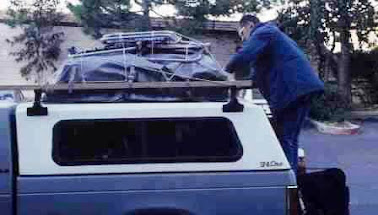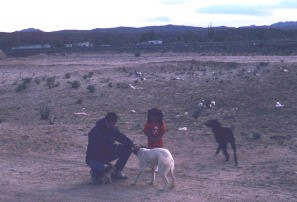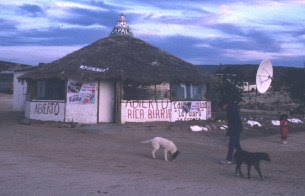Author's Note
In December 2022, I started transcribing my journals and dive logs sporadically kept during my various maritime and diving adventures around the globe since getting certified in July 1984. One year later, with a manuscript of nealy 200 pages, I have hardly made a dent in compiling the stories. I have a lot of material to work with. Next year marks my 40th year being seduced by the underwater world.
I actually started the process of developing the stories at the dawning of the internet age when companies were begging for content and willing to host webpages for free in order to get it My selected channel in those days was Geocities, especially after it was purchased by Yahoo in 1999. Ten years later Yahoo announced that Geocities would be closing. The pages, such as mine could be accessed with some difficulty for a short period of time thereafter, but could not be updated. Geocities quickly faded, haphazardly preserved in the Internet Archives.
The following blog posts are the results of a salvage of the webpages that describe the daily progress of a road trip that Brandon Cole, my brother Andy, and I took in December 1990 from San Diego to Loretto, Baja del Sur, to go scuba diving in the Sea of Cortez. aka the Gulf of California. The trip was conceived by Brandon and I after one of our many Santa Barbara area beach dives. Ed Stetson, our mentor and dive instructor, suggested Mulege as a great destination for the expedition. How we ended up in Loretto will unfold in the following posts.
Brandon, Andy and I made a practice run to dive in Monterey the summer of 1990. We camped at Julia Pfeiffer Burns State Park and dived in the Carmel and Pacific Grove area. But that is an entirely different story.
Half the Fun is Getting There
The truck is tightly packed. We loaded six tanks, dive bags,
tents, sleeping bags, coolers, and assorted other flotsam and jetsam in the cargo
bag on the fiberglass Snug-top shell’s roof rack and in the bed of the truck.
The rack is improvised from my sailboard racks and 2x4s. A vinyl cargo bag,
containing the less used items, rests atop of the shell nested within the
improvised rack. Yellow plastic rope strung
through eyebolts and cleats in the 2x4s secures everything in place. The bed
has just enough room for one person to stretch out, with the other two riding
in the bucket seats in the truck’s cab.

We have planned the trip down to Mulege on the Sea of Cortez in two segments. Our destination today is a campground at Catavina, about 315 miles down the Baja peninsula from my brother's apartment in San Diego.
As we head south on Highway 5 toward the U.S.-Mexico border crossing, we see groups of people walking up the median of the freeway. I can’t imagine what is going on. Andy explains that these people are probably undocumented border crossers. Right now they seem more like traffic hazards than anything else.
We slow to a stop at the border checkpoint. Smartly uniformed officers ask if we have any firearms. Our reply is "no, we do not" and we are directed to the Immigration counter. Because we are going deep down the peninsula, we have to have tourist cards approved by the officials. From the checkpoint, we catch the divided four-lane toll road, Highway 1D, from Tijuana to Ensenada.
South of Ensenada, the terrain quickly changes from urban to rural. We stop at San Quitin to fill up with unleaded gas, a commodity that is only available at some of the Pemex stations along the route. We are immediately surrounded by child vendors who aggressively jockey to wash our windshield or sell us cassette tapes. I politely turn them down and they ask "do you not like Mexican music?" I attempt to explain that I like all music but that I have more than enough tapes.
The guide books and people I consulted about travel in Baja
advise that leaded and unleaded gasoline is available in most larger towns and
most of the stations associated with resort hotels, such as the La Quinta. My
sources caution that smaller towns and isolated stations will have only leaded
gasoline, if they have any at all. As such, I resolve to keep the tank always
at least half filled. Consulting information given to me by our family friend,
Carl Nielsen, who has traveled down the peninsula when the highway was just a
dirt road, I map out critical fueling points and several intermediate locations
to mitigate against the possibility of running out of gas. We have 2.5 gallon
emergency reserve jerry can secured to the roof rack of the truck.
Between San Quetin and Catavina, our stopover point for the
night, the terrain changes from coastal ranges to volcanic rock and caldera,
bearing a resemblance to the landscape along Route 395 which winds up the
eastern Sierra Nevada mountains in California between Mojave and Carson City,
Nevada, except cacti abound instead of Joshua Trees.
Overnighting in Catavina
The entire route down Mexico 1 is open range. We see "road kill" cattle by the side of the road. At one point vultures circle over the road marking what turns out to be a road kill coyote. The travel guides discourage driving at night because of the livestock that takes refuge on the highway’s warm asphalt. So, we stop for the night.
Catavina is little more than a hamlet, a wide spot in the road, consisting of the campground, abandoned gas station, rancherias, and a luxury hotel, which seems out of place. The terrain is largely rock boulder, which are said to contain numerous petroglyphs.
We set up camp. Staking the tent into the granite that
underlies the campgrounds is impossible.
We find several large rocks to anchor the corner of the dome tent. We wander
across the highway to the luncheria for dinner. Brandon was immediately befriended by the owner’s little girl and a small pack of dogs that seem to accompany
her everywhere. Brandon speaks passable Spanish, which has already come in
quite handy. I have a small vocabulary, picked up living in Southern
California, but having taken German in high school I am at a disadvantage
unless we meet a bus load of tourists from Bavaria.
During the night, cattle move into camp. I hear a noise
outside the tent and shine my light into the night only to discover I am in the
midst of a small herd. I mutter a silent prayer that nothing creates a stampede
or that none of the boys have come a callin’ looking to revenge the entree at
tonight’s dinner. A cold, brisk wind blows across the camp carrying on it the
chorus of coyote howls that become my Mexican lullaby.





No comments:
Post a Comment